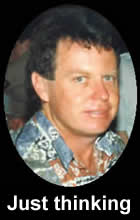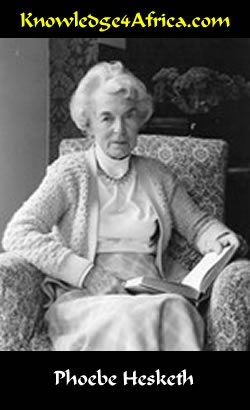|
READ THIS
The poet compares a painting on canvas to a poem. They are both similar forms of art but, where one
uses the brush and the knife to paint a picture on canvas, the other uses the mind to paint a picture in the
mind.
 ABOUT THE POET
ABOUT THE POET
Phoebe Hesketh (nee Rayner) was born in 1909 in Preston (Lancashire). Her father was an early
radiologist, whereas her mother was a violinist.
She attended Dagfield School at Birkdale near Southport, then Cheltenham Ladies' College although
leaving school at 17 to nurse her mother who was terminally ill. Teachers noticed and fostered her poetic
talent.
She would marry Aubrey Hesketh when she was 22 years old. He was the director of a Bolton spinning
mill, wealthy enough to allow her the time to focus on writing poetry. Indeed, eight years later her first
collection was published - which she called Poems - although she would later question some of this
work as being "juvenile".
During World War II Hesketh edited the women's page of the Bolton Evening News. In 1948 came
her second volume of poetry - Lean Forward, Spring! - which won her literary acclaim. She would
go on to produce sixteen books of poetry.
After the war she did some freelance lecturing and teaching of poetry. She was elected a Fellow of the
Royal Society of Literature in 1956, and a Fellow of the University of Central Lancashire in 1990.
For almost all of her life she lived in Lancashire, a landscape frequently described in her poetry and in her
prose books. Indeed, she is most renowned for her poems depicting nature. Critics often compared her
to Emily Bronte.
She died in February 2005. She was then 96 years of age.
Have you looked at the questions
in the right column?
|
TEST YOURSELF!
Read the left column and then answer
the following questions:
"A poem is a painting that is not seen;
A painting is a poem that is not heard."
- Would you agree with this statement. Why? Why not? (10)

[Need help?]
There's no correct answer to this question. It simply demands insight into poetry, painting and art
generally.
Of course, it's not fully true that a poem is a painting "that is not seen" - at least, not if the poem is
published as a written word. Surely then it can be seen?
The author, however, appears to be speaking of a poem as painting in words to be read out loud and
therefore listened to, rather than being locked into the static printed word. Reading a poem in a book is
therefore second best and not the poem's primary purpose.
Indeed, some poets like Chris Mann and Shabbir Banoobhai still make a point of reading their poems out
loud - something that is not often done these days. Usually we just study them at school and university.
Essentially, however, the poet is saying that both poetry and paintings are much the same except that one
is to be looked at and appreciated, while the other is to be listened to and appreciated.
|
"A painting in the mind.
Without palette and brush
it mixes words into images."

[Need help?]
A "palette" is a wooden board which is used for mixing colours for painting.
|
- What would the palette be in the case of creating poetry? (2)

[Need help?]
In the case of creating poetry, the palette would be the mind itself where words are mixed instead of paint
on a palette.
|
- How does the poet compare painting and poetry in these lines? (4)

[Need help?]
An artist uses a palette to mix colours so as to paint visual pictures, whereas the poet uses the mind to
mix words to paint verbal images.
|
"The mind's edge sharpens the knife
slashing the canvas with savage rocks"
- What is the purpose of "the knife" in paintings? (4)

[Need help?]
The knife is used to scrape paint onto the canvas, making very bold and dramatic statements.
|
- What does the poet mean when she says "the mind's edge"? (4)

[Need help?]
You've often heard the expression, "He or she has a very sharp mind." It usually means that the person
is really good at formulating the right words for sarcasm, irony, humour, etc. It's the sharp mind which
makes the very bold and dramatic statements in poetry or in conversation - like the savage rocks in
paintings.
|
- What does the poet mean when she says, "slashing the canvas"? (4)

[Need help?]
A sharp knife is used for slashing or cutting things. The sharp mind, says the poet, is used for slashing
or cutting the canvas of the mind. It makes the really bold statements in poetry, the cutting statements -
but the really cutting ones can therefore be called "slashing" - a play on words.
|
"twisting trees and limbs into tortuous shapes
as Van Gogh did
or bewitched by movement's grace,
captures the opalescent skirts
of Degas' ballet dancers."
- How does the poet compare the art of Van Gogh and Degas? (4)

[Need help?]
Van Gogh, the poet says, is famous for his bold, "twisted", distorted scenes whereas Degas is famous for
his graceful scenes which are also rich in colour.
|
- How would such a comparison be made in poetry? (4)

[Need help?]
In poetry, the bold, cutting statements would represent Van Gogh whereas the flowing descriptive graceful
statements would represent Degas.
|
"But words on the page
as paint on canvas
are fixed.
It's in the spaces between
the poem is quickened."
- The poet says that words on the page and paint on the canvas are "fixed". What then is it that
"quickens" or gives life to poetry? (4)

[Need help?]
To "quicken" means "to give life to the poem". "Quick" is an old English word for "life" or "the living" as
opposed to "the dead". "The quick and the dead."
According to the poet, a poem which is printed on a page is "fixed" and lifeless. It needs to be read out
loud. It's therefore the space between the reading and the hearing which gives life to the poem. It's how
well one reads the poem.
|
|



